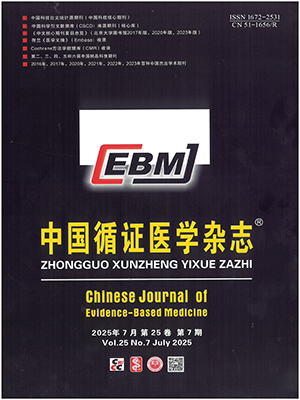| 1. |
Kidney Disease: Improving Global Outcomes (KDIGO) CKD Work Group. KDIGO 2024 clinical practice guideline for the evaluation and management of chronic kidney disease. Kidney Int, 2024, 105(4S): S117-S314.
|
| 2. |
Levey AS, Coresh J. Chronic kidney disease. Lancet, 2012, 379(9811): 165-180.
|
| 3. |
GBD Chronic Kidney Disease Collaboration. Global, regional, and national burden of chronic kidney disease, 1990-2017: a systematic analysis for the global burden of disease study 2017. Lancet, 2020, 395(10225): 709-733.
|
| 4. |
Li Y, Ning Y, Shen B, et al. Temporal trends in prevalence and mortality for chronic kidney disease in China from 1990 to 2019: an analysis of the global burden of disease study 2019. Clin Kidney J, 2022, 16(2): 312-321.
|
| 5. |
Wang L, Xu X, Zhang M, et al. Prevalence of chronic kidney disease in China: results from the sixth China chronic disease and risk factor surveillance. JAMA Intern Med, 2023, 183(4): 298-310.
|
| 6. |
Bowe B, Xie Y, Li T, et al. Changes in the US burden of chronic kidney disease from 2002 to 2016: an analysis of the global burden of disease study. JAMA Netw Open, 2018, 1(7): e184412.
|
| 7. |
柯倩, 宇传华, 刘晓雪, 等. 基于GBD数据的中国慢性肾病疾病负担现状及趋势分析. 公共卫生与预防医学, 2021, 32(5): 1-5.
|
| 8. |
GBD 2021 Risk Factors Collaborators. Global burden and strength of evidence for 88 risk factors in 204 countries and 811 subnational locations, 1990-2021: a systematic analysis for the global burden of disease study 2021. Lancet, 2024, 403(10440): 2162-2203.
|
| 9. |
GBD 2021 Diseases and Injuries Collaborators. Global incidence, prevalence, years lived with disability (YLDs), disability-adjusted life-years (DALYs), and healthy life expectancy (HALE) for 371 diseases and injuries in 204 countries and territories and 811 subnational locations, 1990-2021: a systematic analysis for the global burden of disease study 2021. Lancet, 2024, 403(10440): 1951.
|
| 10. |
刘珊山, 何昱静, 李初谊, 等. 1990−2019年中国归因于饮酒的肝癌疾病负担变化趋势分析. 中国循证医学杂志, 2024, 24(7): 776-782.
|
| 11. |
Kim HJ, Fay MP, Feuer EJ, et al. Permutation tests for joinpoint regression with applications to cancer rates. Stat Med, 2000, 19(3): 335-351.
|
| 12. |
Yang Y, Fu WJ, Land KC. A methodological comparison of age-period-cohort models: the intrinsic estimator and conventional generalized linear models. Sociol Methodol, 2004, 34(1): 75-110.
|
| 13. |
Xu D, Hu J, Wang S, et al. Trends in the prevalence of hypertensive heart disease in China from 1990 to 2019: a joinpoint and age-period-cohort analysis. Front Public Health, 2022, 10: 833345.
|
| 14. |
Arnold M, Park JY, Camargo MC, et al. Is gastric cancer becoming a rare disease. A global assessment of predicted incidence trends to 2035. Gut, 2020, 69(5): 823-829.
|
| 15. |
Ricardo AC, Yang W, Sha D, et al. Sex-related disparities in CKD progression. J Am Soc Nephrol, 2019, 30(1): 137-146.
|
| 16. |
张珏, 刘芳. 性别与慢性肾脏病. 华西医学, 2021, 36(3): 396-400.
|
| 17. |
Kovesdy CP. Epidemiology of chronic kidney disease: an update 2022. Kidney Int Suppl (2011), 2022, 12(1): 7-11.
|
| 18. |
Ortiz A, Mattace-Raso F, Soler MJ, et al. Ageing meets kidney disease. Clin Kidney J, 2022, 15(10): 1793-1796.
|
| 19. |
National Kidney Foundation. K/DOQI clinical practice guidelines for chronic kidney disease: evaluation, classification, and stratification. Am J Kidney Dis, 2002, 39(2 Suppl 1): S1-S266.
|
| 20. |
Kidney Disease: Improving Global Outcomes (KDIGO) Transplant Work Group. KDIGO clinical practice guideline for the care of kidney transplant recipients. Am J Transplant, 2009, (9 Suppl 3): S1-S155.
|
| 21. |
Uhlig K, Berns JS, Kestenbaum B, et al. KDOQI US commentary on the 2009 KDIGO clinical practice guideline for the diagnosis, evaluation, and treatment of CKD-mineral and bone disorder (CKD-MBD). Am J Kidney Dis, 2010, 55(5): 773-799.
|
| 22. |
Stevens PE, Levin A, Kidney Disease: Improving Global Outcomes Chronic Kidney Disease Guideline Development Work Group Members. Evaluation and management of chronic kidney disease: synopsis of the kidney disease: improving global outcomes 2012 clinical practice guideline. Ann Intern Med, 2013, 158(11): 825-830.
|
| 23. |
马越, 孔祥婕, 彭雯, 等. 中国糖尿病疾病负担现状及趋势. 中国预防医学杂志, 2023, 24(4): 281-286.
|
| 24. |
Aires Neto P, Gomes HV, Campos M. Management of hyperglycemia in patients with chronic kidney disease. J Nephrol, 2013, 26(4): 629-635.
|
| 25. |
王琦, 杜文雯, 宋晓昀, 等. 中国成人体质指数轨迹与高血压及血压水平关系. 卫生研究, 2023, 52(3): 354-361.
|
| 26. |
Jiang Z, Wang Y, Zhao X, et al. Obesity and chronic kidney disease. Am J Physiol Endocrinol Metab, 2023, 324(1): E24-E41.
|
| 27. |
于文娟, 赵蓓, 钟海珍, 等. 老年原发性高血压合并慢性肾病患者的危险因素分析. 中华高血压杂志, 2018, 26(3): 300.
|
| 28. |
Tuttle KR, McGill JB. Evidence-based treatment of hyperglycaemia with incretin therapies in patients with type 2 diabetes and advanced chronic kidney disease. Diabetes Obes Metab, 2020, 22(7): 1014-1023.
|




